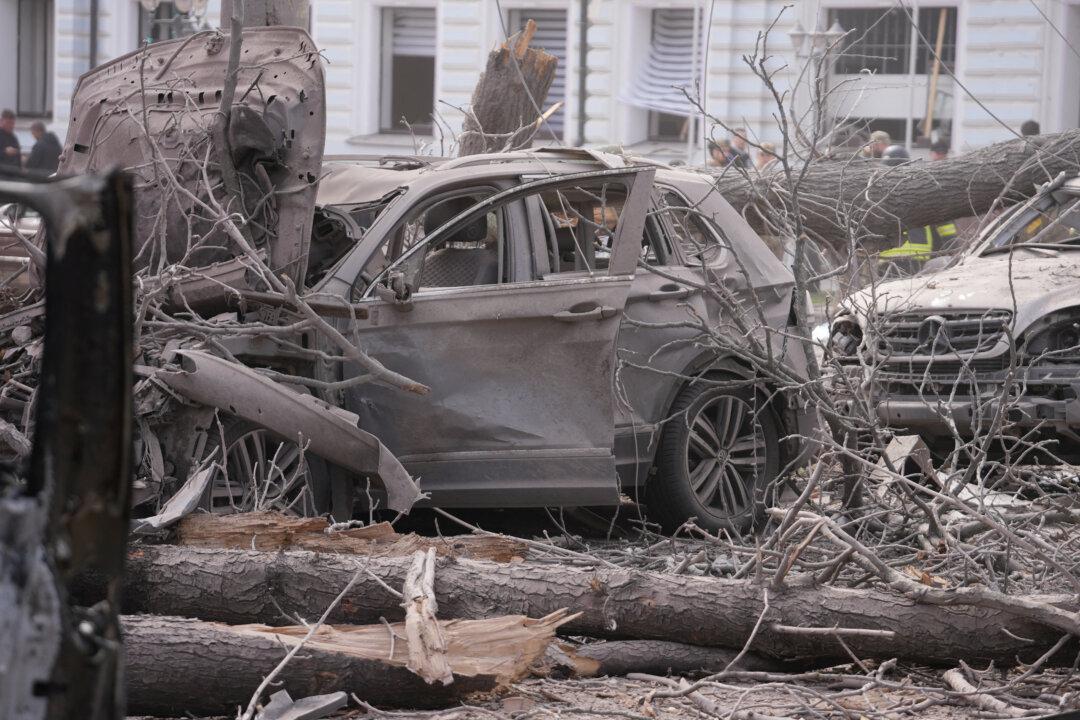The move, which received relatively scant media coverage, came amid ongoing tensions with neighboring Azerbaijan, Armenia’s longstanding foe in the region.
Since the collapse of the Soviet Union in 1991, the two countries—both former soviet republics—have fought two major wars over the Nagorno-Karabakh region, which is internationally recognized as part of Azerbaijan.
In 2023, Azerbaijan staged a 24-hour military offensive into Nagorno-Karabakh that succeeded in bringing the mountainous region under its full control.
Since then, the two countries have sought to reach an agreement—with Russian mediation—aimed at ending hostilities and demarcating their shared border.
“The peace agreement is ready for signing,” Armenia’s foreign ministry said in a statement released on March 13.
On the same day, Azerbaijan’s foreign ministry likewise confirmed that “negotiations on the text of the draft agreement … have been concluded.”
Nevertheless, flare-ups between the two regional adversaries have persisted along their roughly 620-mile-long shared border.
“We reaffirm our call on Baku and Yerevan [the capitals of Azerbaijan and Armenia, respectively] to demonstrate restraint, take measures to de-escalate tensions, and avoid actions that could worsen the situation,” a Russian Foreign Ministry spokeswoman said on April 9.
“We are ready to assist our partners in overcoming the remaining disagreements blocking the signing of a peace treaty,” she added.
Speaking to The Epoch Times, Stanislav Aleksandrovich Pritchin, a Russian political analyst, said Armenia and Azerbaijan had already agreed to “most elements” of a draft peace agreement.
According to Pritchin, the main sticking point is Baku’s demand that Armenia remove a clause from its Constitution enshrining its claim to Nagorno-Karabakh.
“For Armenia, it’s no easy matter to hold a referendum on constitutional change,” he said.
“There are also a number of other outstanding differences [between Baku and Yerevan] that will likely hinder the normalization of ties in the short term,” added Pritchin, who heads the Central Asia desk at Moscow’s Institute of World Economy and International Relations.
Halil Akinci, a political analyst and a former Turkish ambassador to Russia, said a deal between the two countries had been reached but has “yet to be formalized.”
“Armenia is ready to delimit the border and acknowledge that Karabakh belongs to Azerbaijan,” he told The Epoch Times.
“Both sides have addressed almost all outstanding issues, but the treaty still hasn’t been signed,” he added. “For some reason, it’s being delayed.”
Akinci went on to suggest that the recent border flare-ups were being instigated—or exaggerated—by hardline elements on both sides with the aim of derailing the peace process.
“This tension is being created,” he said. “It’s artificial.”
“Maybe there were some minor skirmishes,” he added. “But this is always the case along international borders.”

A Foot in Both Camps
Since Azerbaijan’s 2023 offensive, Yerevan has moved steadily closer to Brussels and Washington, despite its longstanding alliance with Russia.In early 2024, Armenia suspended its participation in the Collective Security Treaty Organization (CSTO), a six-nation security bloc led by Moscow.
Yerevan attributed the move to the CSTO’s alleged failure to come to Armenia’s aid during Azerbaijan’s military offensive—an assertion rejected by Moscow.
Along with taking tentative steps towards the EU, Armenia has also drawn closer to the United States, with which it signed a strategic partnership deal in January.
Days earlier, Armenia’s parliament ratified the bill paving the way for eventual EU accession, which was signed last week by the country’s president.
Nikol Pashinyan, Armenia’s prime minister, has repeatedly stressed that any future EU membership bid would first require approval in a popular referendum.
The driving force behind Yerevan’s westward trajectory, Pashinyan has also cautioned against expectations of a speedy EU accession process.
Pritchin downplayed Armenia’s chances of mounting a successful EU membership bid—even in the long term—citing “political and geographic factors.”
Located in the South Caucasus region, Armenia sits well outside Europe’s geographic boundaries. Nor does it border any of the EU’s current members.
Nevertheless, Brussels has expressed support for a prospective bid by Armenia to join the 27-nation bloc.
In a resolution adopted last year, the European Parliament said Armenia’s application for EU candidate status would “set the stage for a transformative phase in EU-Armenia relations.”

Yerevan’s Choice
Moscow, however, has repeatedly warned that EU membership would be “incompatible” with Armenia’s current affiliation with the Russia-led Eurasian Economic Union (EAEU).In January, Alexey Overchuk, Russia’s deputy prime minister, said an Armenian bid to join the EU would force Yerevan to “make a choice” between the two economic blocs.
Earlier this month, Rodion Miroshnik, a top Russian Foreign Ministry official, ruled out Armenia’s simultaneous membership in the EU, EAEU, and CSTO.
“However, it is unlikely that participation in the CSTO and EAEU can coexist with EU membership,” he added.
Officially launched in 2015, the EAEU is comprised of Russia, Armenia, Belarus, Kazakhstan, and Kyrgyzstan.
“For Russia, Armenia must leave the EAEU if it wants to join the EU,” Pritchin said.
“This would be a difficult choice because Armenia benefits from its membership in the EAEU,” he added. “Its economy would face catastrophe if it left the bloc.”
In a further sign of the region’s complex dynamics, Armenia this week held joint military drills with Iran along the two countries’ 26-mile-long shared border.
“The aim of these drills is consolidating the security of the borders on the basis of shared interests,” Iranian state media cited a military official as saying.
According to Pritchin, Armenia’s recent tilt towards the West appears to run counter to military cooperation with Iran, which the United States views as its chief regional adversary.
“Most observers see a contradiction between Armenia wanting to join the EU—and seeking enhanced security ties with the United States—while also boosting strategic relations with Iran,” he said.
“Nevertheless, recent months have seen deepening ties between Armenia and Iran, including reciprocal visits by several high-ranking officials,” he added.







